Expanding foam is an excellent insulator and air-sealing product. It's beneficial for sealing holes, cracks, and gaps in your home, especially if those gaps are between the wall and the ceiling. It can also be used without a nozzle outside. You may be wondering, how is that possible? We have extensively researched this, and here is what we have found.
There are several steps on how to use expanding foam without a nozzle. These include the following:
- Choose the right type of expanding foam
- Prepare the area of application
- Mix the expanding foam
- Pour the expanding foam into the hole
- Remove the excess material
However, expanding foam can be tricky to use correctly, as the stuff expands a lot when applied to the surface. We have found the best advice from experts on this topic to make things easier for you. Continue reading as we lay out more details about these steps, including other relevant information you are better off knowing.
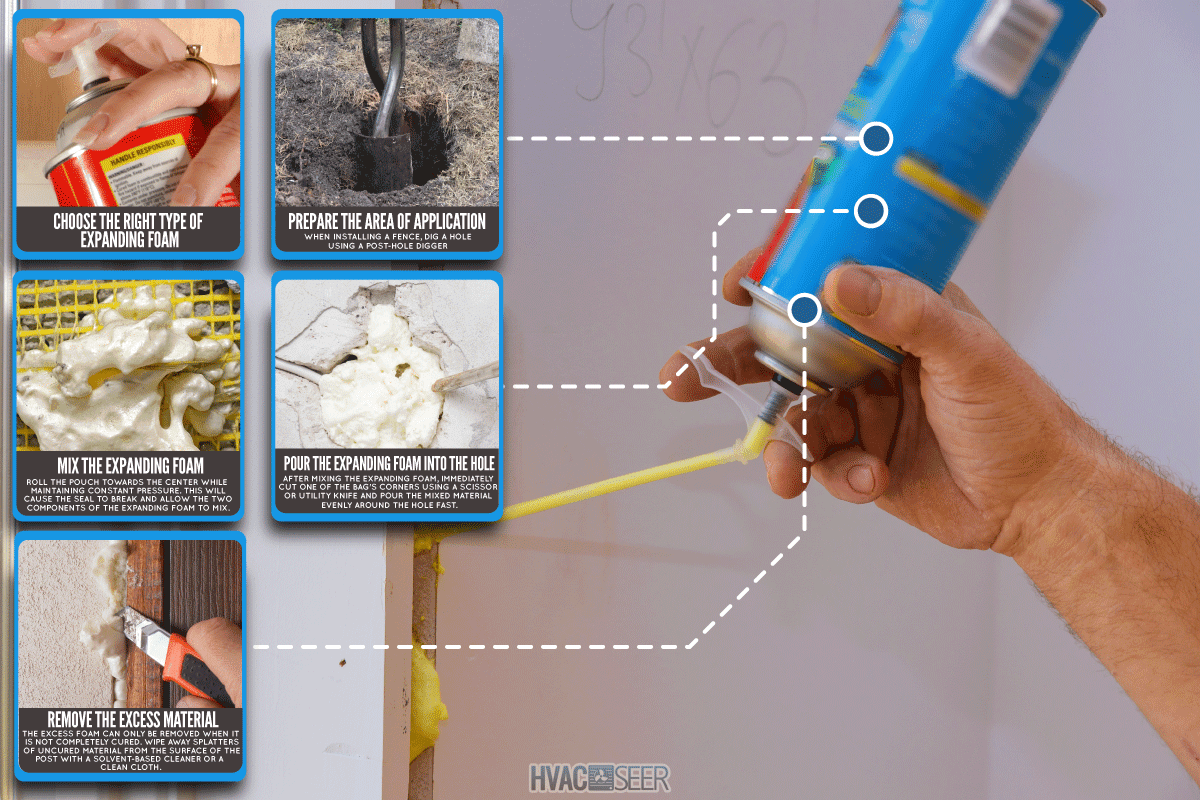
Steps On How To Use Expanding Foam Without A Nozzle
It is easy to use expanding foam without a nozzle. As long as you have all the necessary materials and follow our prepared instructions, it will be a breeze! Read on for the step-by-step procedure on how to do so.
Materials To Be Used
The materials necessary to use expanding foam without a nozzle are as follows:
- Bag of Sika Post Fix (expanding foam)
- Safety glasses and gloves
- Scissors or utility knife
- Solvent-based cleaner, cloth, or saw
As soon as you have these materials prepared, you can start your project that requires using expanding foam.
Choose The Right Type Of Expanding Foam
The first thing you must do is choose the right type of expanding foam for the job. There are a few different types of expanding foam, and each one comes with different instructions for use.
Once you have selected the expanding foam you want to use, read the instructions on your expanding foam. Some types of expanding foam come with premixed chemicals, while others require you to mix them on your own. So always make sure to follow the manufacturer's instructions and safety precautions regarding its use.
If you are installing a non-load-bearing post, Sika Post Fix is a perfect option for you. It is an expanding foam created by mixing two components of pre-proportioned resin in a single bag. It is usually used to support and backfill non-structural posts, such as a fence, gates, mailbox, signage, etc.
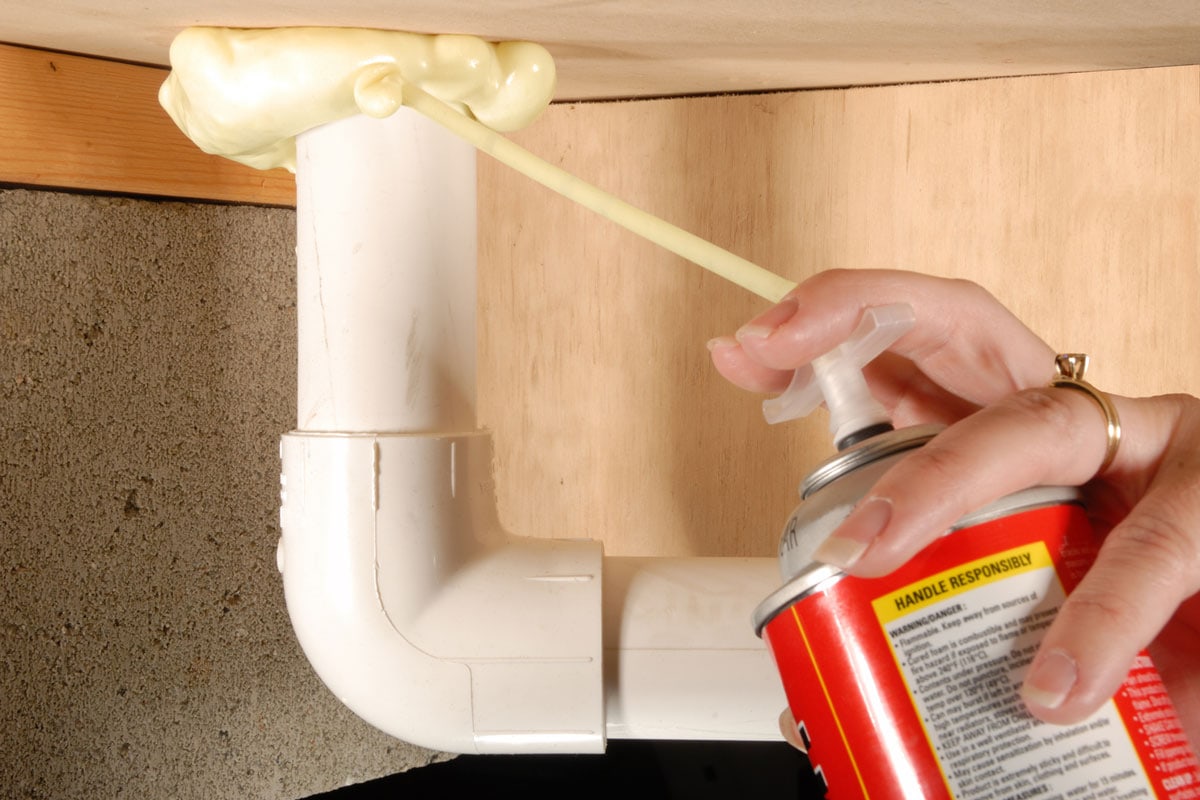
Since it is a mix in the bag expanding foam, it can be used perfectly without a nozzle. It is also suitable for all types of posts made of various materials. Other qualities of this expanding foam include being lightweight, easy to handle, simple application, fast setting, and high strength, among other notable qualities.
Check out Sika Post Fix expanding foam on Amazon.
Prepare The Area Of Application
When installing a fence, dig the hole to an adequate depth using a post-hole digger. A power auger may be necessary if the soil is too hard to dig with the said digger. Place the post into the hole, and make sure that it is positioned correctly, leveled, and braced (recommended for stability).
Water may also be present in the hole at the start. Use soil or gravel to partially backfill the hole. You can also use a pump to remove the water from the hole.
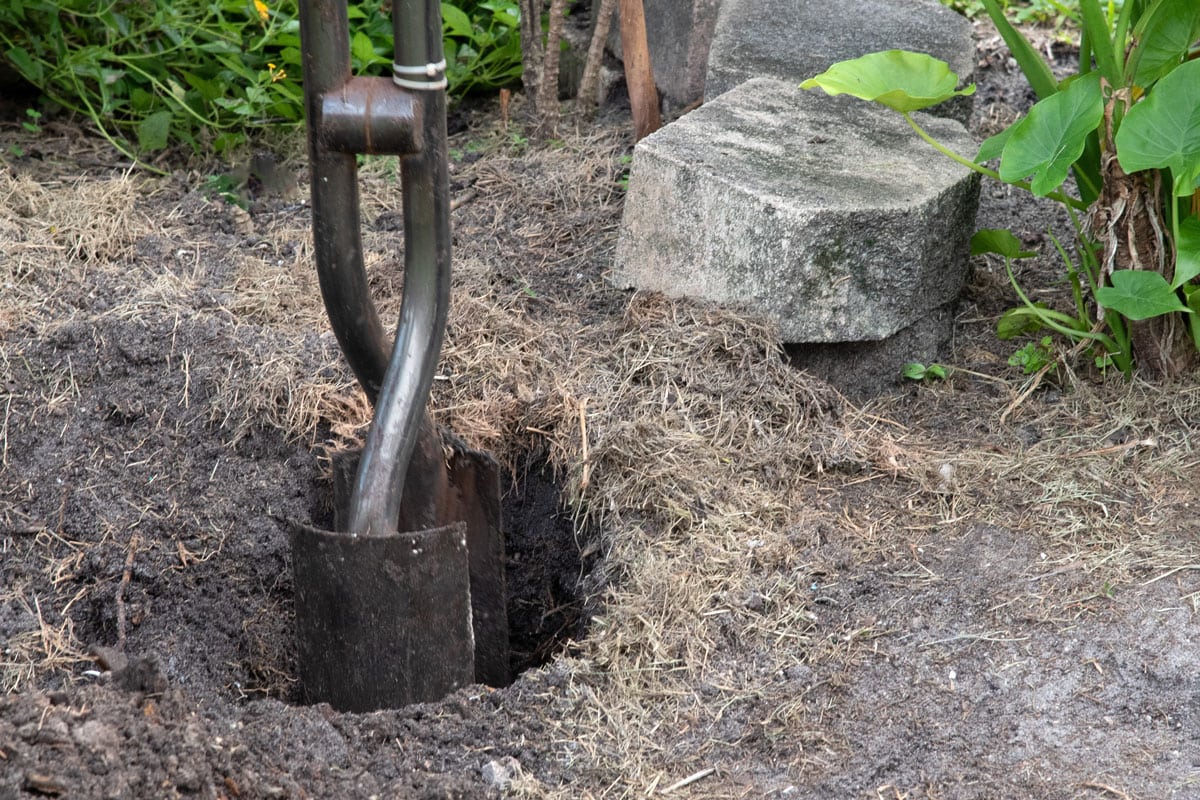
Mix The Expanding Foam
Before mixing the expanding foam, wear safety glasses and gloves to avoid direct contact with the chemical that can irritate. Mix the expanding foam near the application area adjacent to the hole.
The pouch has arrows printed on it leading to the center, which is where the burst seal is located. Roll the pouch towards the center while maintaining constant pressure. This will cause the seal to break and allow the two components of the expanding foam to mix.
Mix the components well by rubbing the pouch back and forth on a flat, blunt edge for no more than 15 seconds. Any longer will allow the foam to start expanding inside the pouch. For safety purposes, keep the pouch away from your face in case the foam ruptures the pouch.
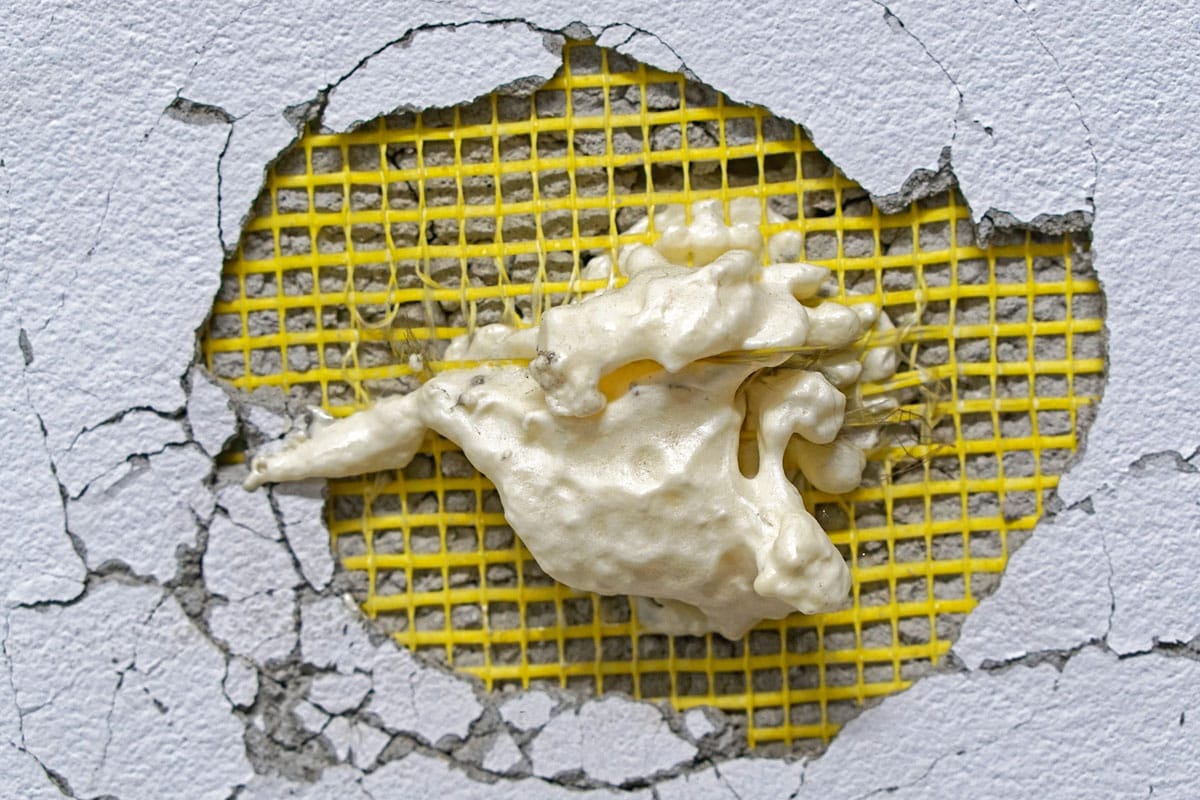
Pour The Expanding Foam Into The Hole
After mixing the expanding foam, immediately cut one of the bag's corners using a scissor or utility knife and pour the mixed material evenly around the hole fast. Pour everything into the hole, making sure that none of it is wasted.
To provide protection and an excellent seal to the base of the post, as well as improved support, covering the section of the post below ground level is a good idea. You also have only 10 seconds to adjust the positioning of the post before the foam starts to harden. Let the post stand still until the foam has hardened to the touch, which is only around 3-5 minutes.
After the foam has hardened, you can remove the brace or support of the post or let it still until you think it stands firm enough. Allow the expanding foam to completely cure before attaching the fence or any other accessory to the post.
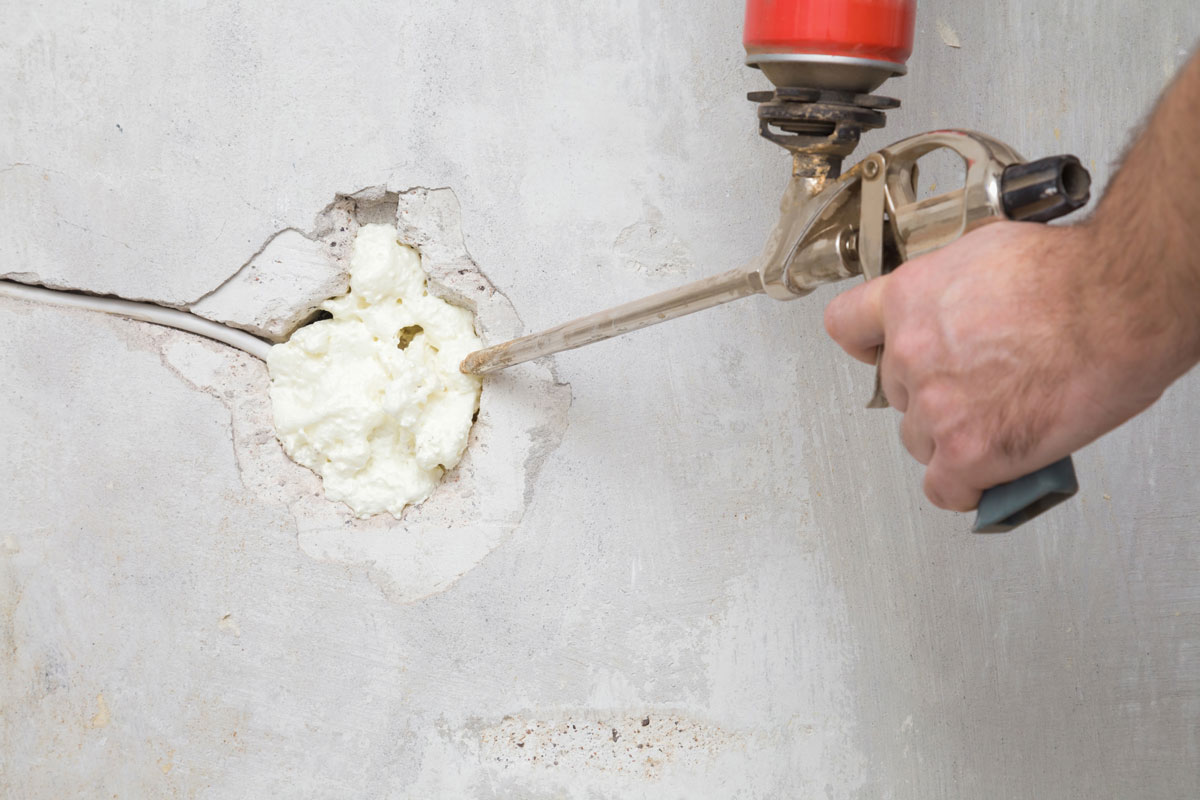
Remove The Excess Material
The excess foam can only be removed when it is not completely cured. Wipe away splatters of uncured material from the surface of the post with a solvent-based cleaner or a clean cloth. Adhere to the solvent manufacturer's instructions and warnings for use.
You can also wait after the curing finishes before removing the excess hardened material using a hand tool such as a saw. Clean the materials after use. Dispose of the expanding foam container per local regulations.
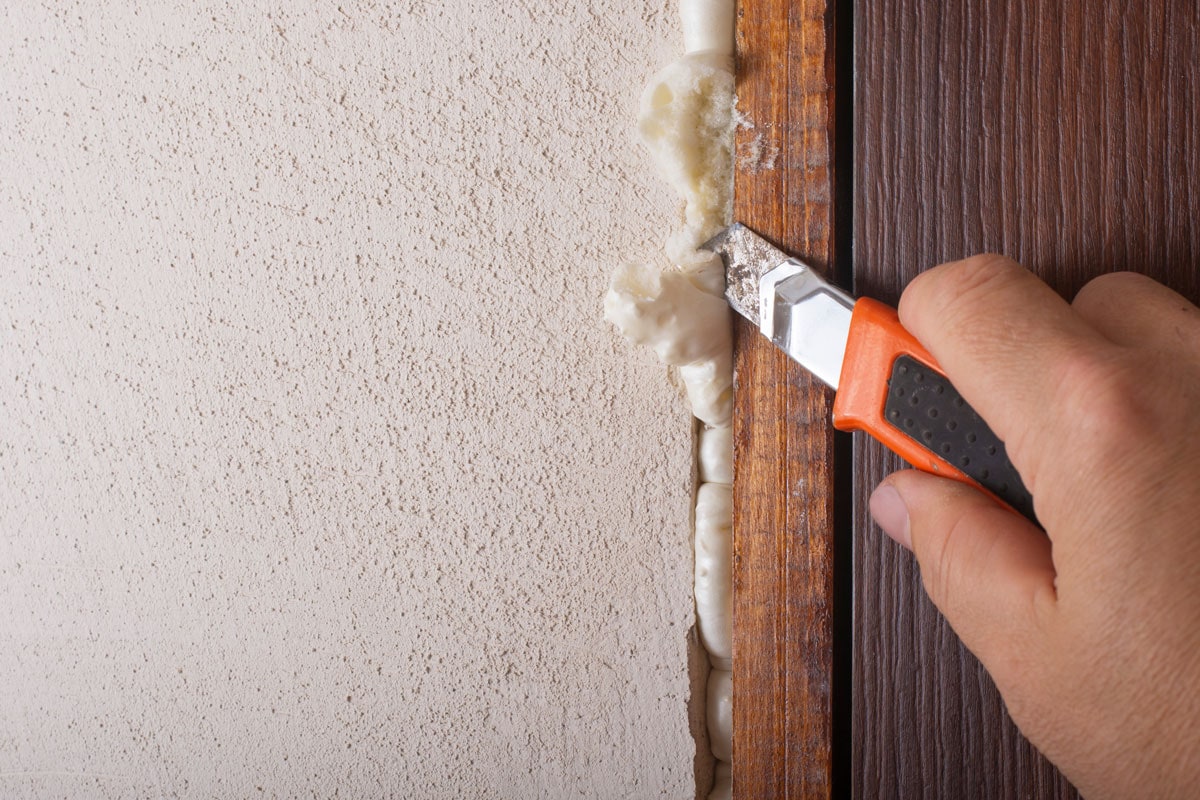
What Is Expanding Foam?
Expanding foam is what you get when you mix two chemicals – one that expands and one that hardens – together. These two chemicals must be mixed just before spraying them onto your wall or ceiling because they expand at different rates when they get warm.
Spray foam insulation is categorized mainly into either open cell or closed cell spray foam insulation. Depending on the expanding foam you use, the chemical reaction that leads to the expanding foam may take a few minutes or hours. When the expanding foam hardens, it creates a strong, durable, and water-resistant substance that you can use for various purposes.
Expanding foam is typically paired with a nozzle or spray gun when applied. Using a nozzle is necessary when the application area involves narrow gaps or openings for the expanding foam. A spray gun applies to expand foam in a wide area, such as walls, for fast and precise application.
If you have never used expanding foam before, you are probably wondering what you can do with it. Expanding foam is excellent for filling gaps, cracks, and holes. You don't want pests getting inside your home. You can also use it outside your home, specifically in installing non-load-bearing posts, including your fence, where expanding foam is used without a nozzle.
How Much Does An Expanding Foam Cost?
Polyurethane Foam Spray Insulation price typically ranges from $15 to $30 per can (24 to 28 oz.). On the other hand, Sika Post Fix usually costs less than $20 per bag (33 fl. oz.). Depending on the job's size, many cans or bags of expanding foam may be necessary, bringing the cost up.
Safety Precautions
The expanding foam contains various chemicals that can be harmful to people when they are exposed to it. Here are a few safety precautions that should be observed when using the expanding foam:
- If inhaled, immediately move to an open, well-ventilated area.
- Remove contaminated clothing and shoes immediately if skin contact occurs. Wash your skin thoroughly with soap and water.
- If it comes into contact with your eyes, immediately flush them with plenty of clean, running water, making sure that your eyes are open while doing so.
- In case of ingestion, rinse your mouth with water and drink plenty of water. Do not make yourself vomit. Also, consume no milk or alcoholic beverages.
- Consult a physician for medical attention after significant exposure.
Two Alternatives To Expanding Foam
If you think that using expanding foam is not appropriate for your use, here are two possible alternatives for it:
Silicone sealants
Silicone sealants are a great option if you're wondering what to do instead of expanding foam. While silicone sealants are not the same as expanding foam, they are a fantastic substitute. Silicone sealants have many of the same properties as expanding foam, including a durable and water-resistant seal.
Check out this silicone sealant on Amazon.
Construction adhesives
Depending on the application, construction adhesives are another great option if you're wondering what to do instead of using expanding foam. These adhesives are generally applied to help join different materials, such as wood and drywall.
Check out this construction adhesive on Amazon.
To Wrap Up
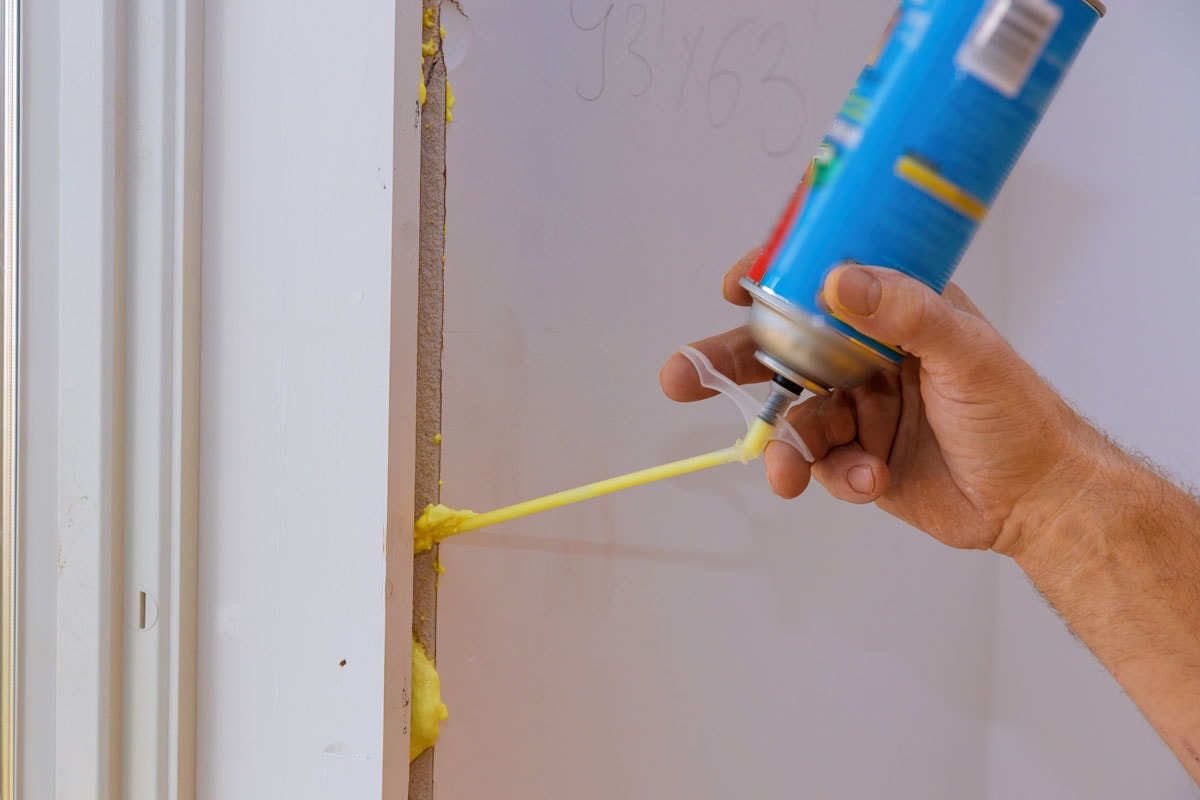
Before you start doing the task involving expanding foam or any other task, do your research. Doing so without prior knowledge will make it seem harder than it is, along with wasting materials unnecessarily. If you're wondering how to use expanding foam without a nozzle, read the advice in this article and follow the steps listed.
If you have found this helpful, do check out other articles in this category:



